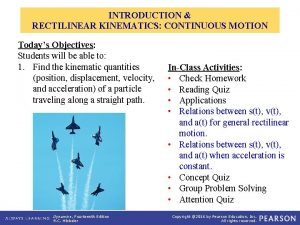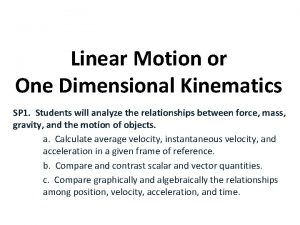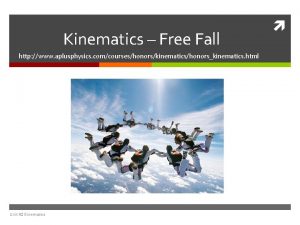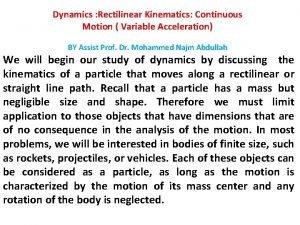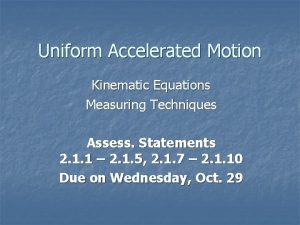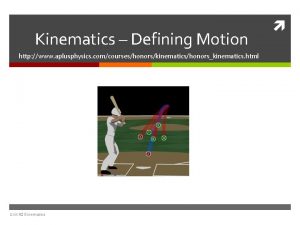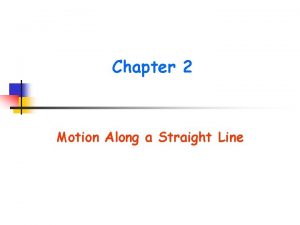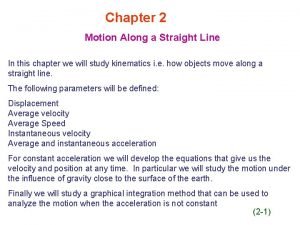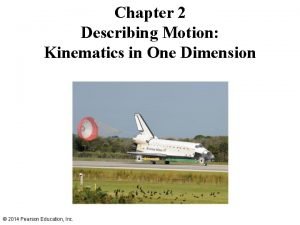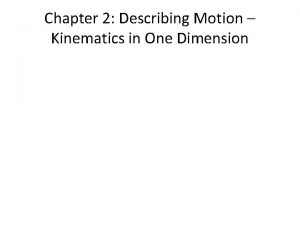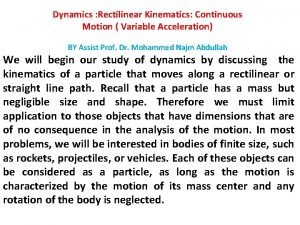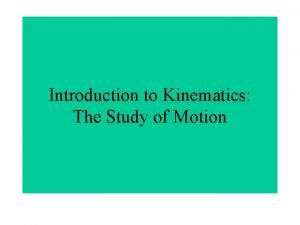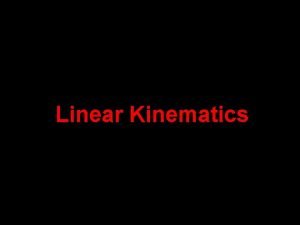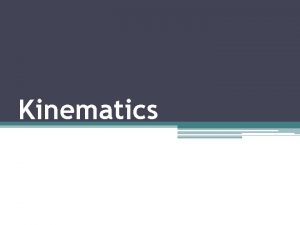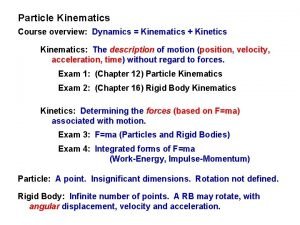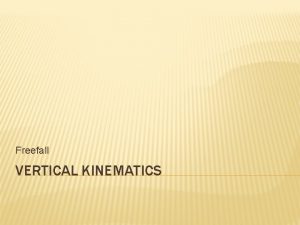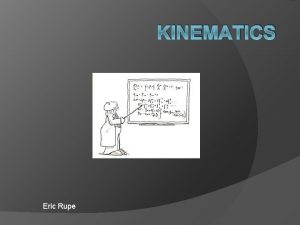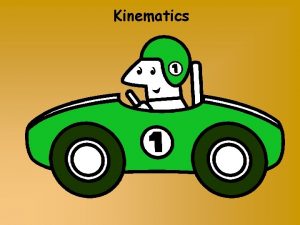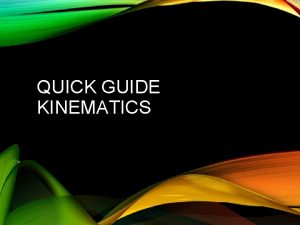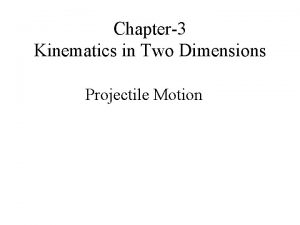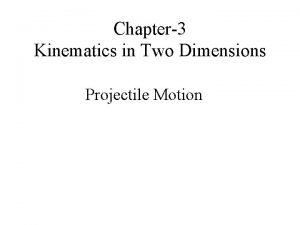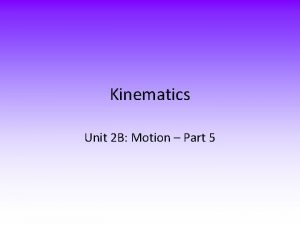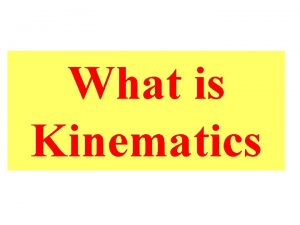KINEMATICS Chapter 3 KINEMATICS Study of the motion

















- Slides: 17

KINEMATICS Chapter 3

KINEMATICS • Study of the motion of an object without considering outside factors which causes their motion.

KINEMATICS • Motion – denotes a change in position of a body with respect to some fixed point or reference point. • Speed – distance which a body traverse per unit time (scalar) • Velocity – displacement of a body per unit time (vector)

KINEMATICS •

KINEMATICS • Speed is equal to velocity if the body moves along a straight line (rectilinear motion). • If a body moves with equal displacement in equal intervals of time then the body is said to be moving with uniform motion. (v = constant)

KINEMATICS •

KINEMATICS • If magnitude of velocity is increasing, acceleration is positive; if decreasing, acceleration is negative (deceleration).

UNIFORMLY ACCELERATED MOTION •

UNIFORMLY ACCELERATED MOTION • When a body starts from rest, v 0 is zero and acceleration is positive. • If the body decreases in velocity, acceleration is negative, velocity becomes smaller than v 0 and when the body stops v = 0.

EXAMPLE How far does an automobile move while its speed increases uniformly from 15 mi/hr to 45 mi/hr in 10 s?

FREELY FALLING BODIES • The most common example of uniformly accelerated translation is that of body falling under the action of its own weight. • In the absence of air resistance, it is found that all bodies regardless of their size or weight; fall with the same acceleration at the same point on the surface of the earth.

FREELY FALLING BODIES Actual acceleration of falling objects depends on: • Location on the earth • Size and shape of the object • Density • State of atmosphere • Rotation of the earth

FREELY FALLING BODIES • a = g • At or near the earth’s surface g = 32. 17 ft/s 2 = 9. 806 m/s 2 = 980. 6 cm/s 2 • On the surface of the moon g = 1. 67 m/s 2 = 5. 47 ft/s 2 • Near the surface of the sun g = 274 m/s 2

FREELY FALLING BODIES •

FREELY FALLING BODIES • Acceleration of gravity is positive for bodies that are falling and negative for bodies that are thrown upward.

EXAMPLE A one-euro coin is dropped from the Leaning Tower of Pisa. It starts from rest and falls freely. Compute its position and velocity after 1. 0 s, 2. 0 s, and 3. 0 s.

MOTION IN A PLANE • A body that moves through space usually has a curved path rather than a perfectly straight one. • Projectile – any body that is given an initial velocity and then allowed to move under the influence of gravity. • Trajectory – the path followed by a projectile.
 Aplusphysics kinematics-horizontal kinematics
Aplusphysics kinematics-horizontal kinematics Objective of work study
Objective of work study Difference between time study and motion study
Difference between time study and motion study Rectilinear kinematics
Rectilinear kinematics Rectilinear kinematics continuous motion
Rectilinear kinematics continuous motion 1 dimensional kinematics
1 dimensional kinematics Aplusphysics kinematics-free fall answers
Aplusphysics kinematics-free fall answers Rectilinear motion with variable acceleration
Rectilinear motion with variable acceleration Kinematic equations rearranged
Kinematic equations rearranged Kinematics of simple harmonic motion
Kinematics of simple harmonic motion Kinematics defining motion
Kinematics defining motion Motion along a straight line
Motion along a straight line Kinematics: motion along a straight line
Kinematics: motion along a straight line Describing motion kinematics in one dimension
Describing motion kinematics in one dimension Describing motion kinematics in one dimension
Describing motion kinematics in one dimension Projectile motion equations
Projectile motion equations Rectilinear motion with variable acceleration
Rectilinear motion with variable acceleration Chapter 2 motion section 1 describing motion answer key
Chapter 2 motion section 1 describing motion answer key



